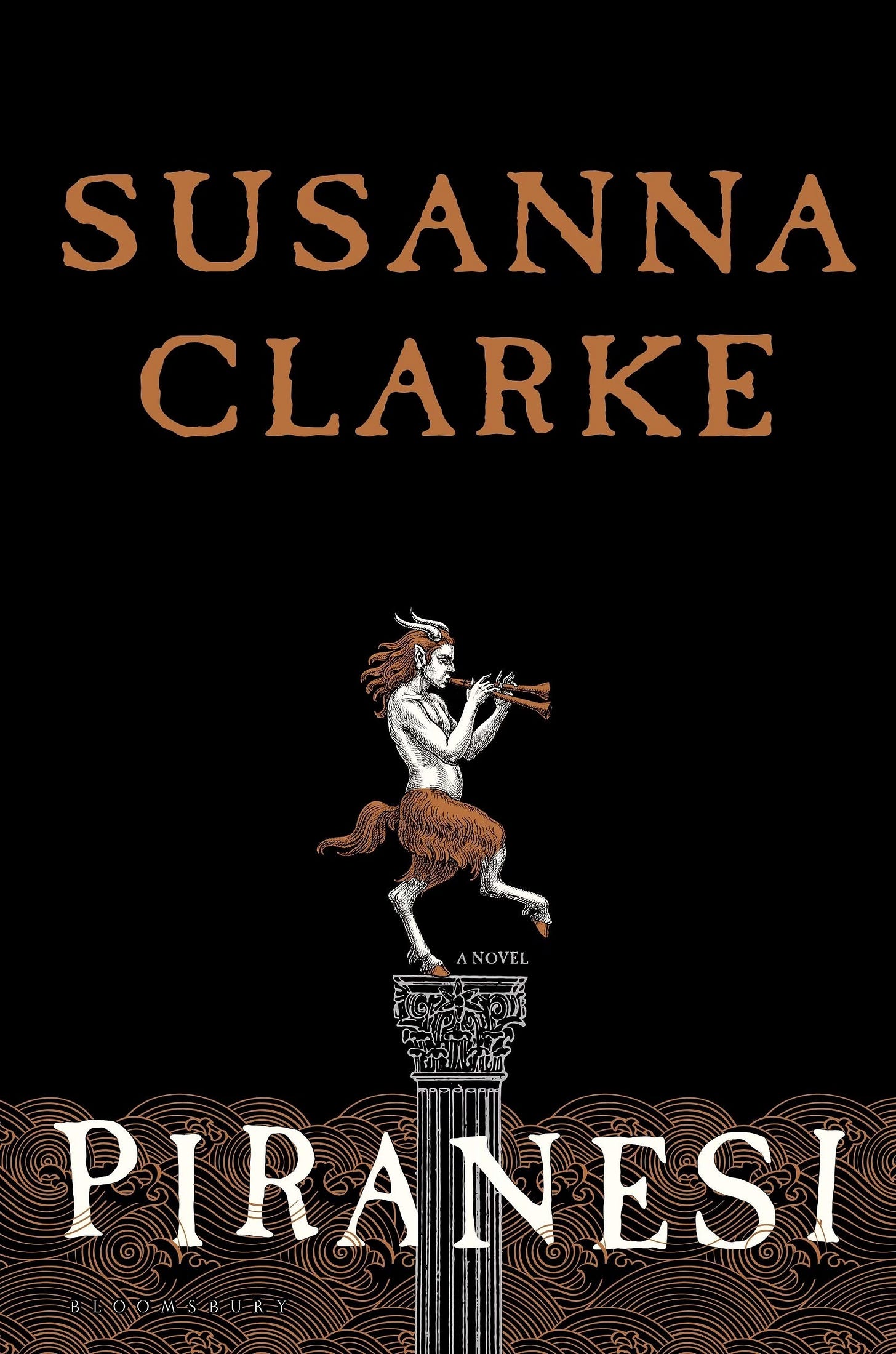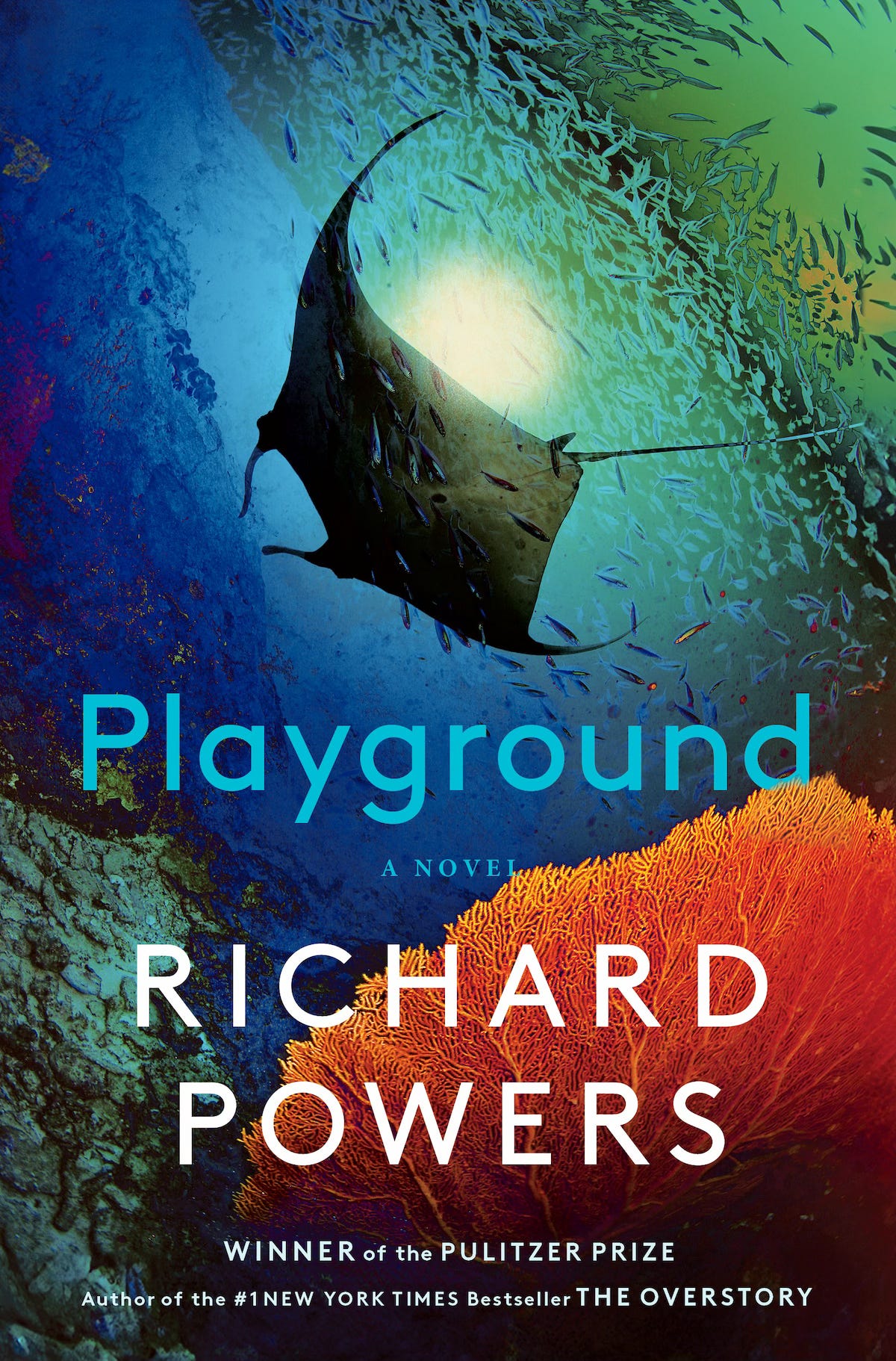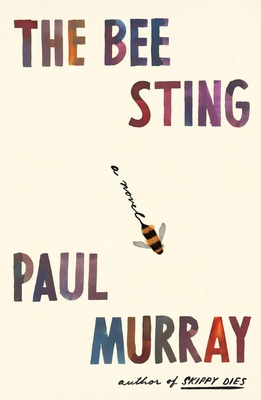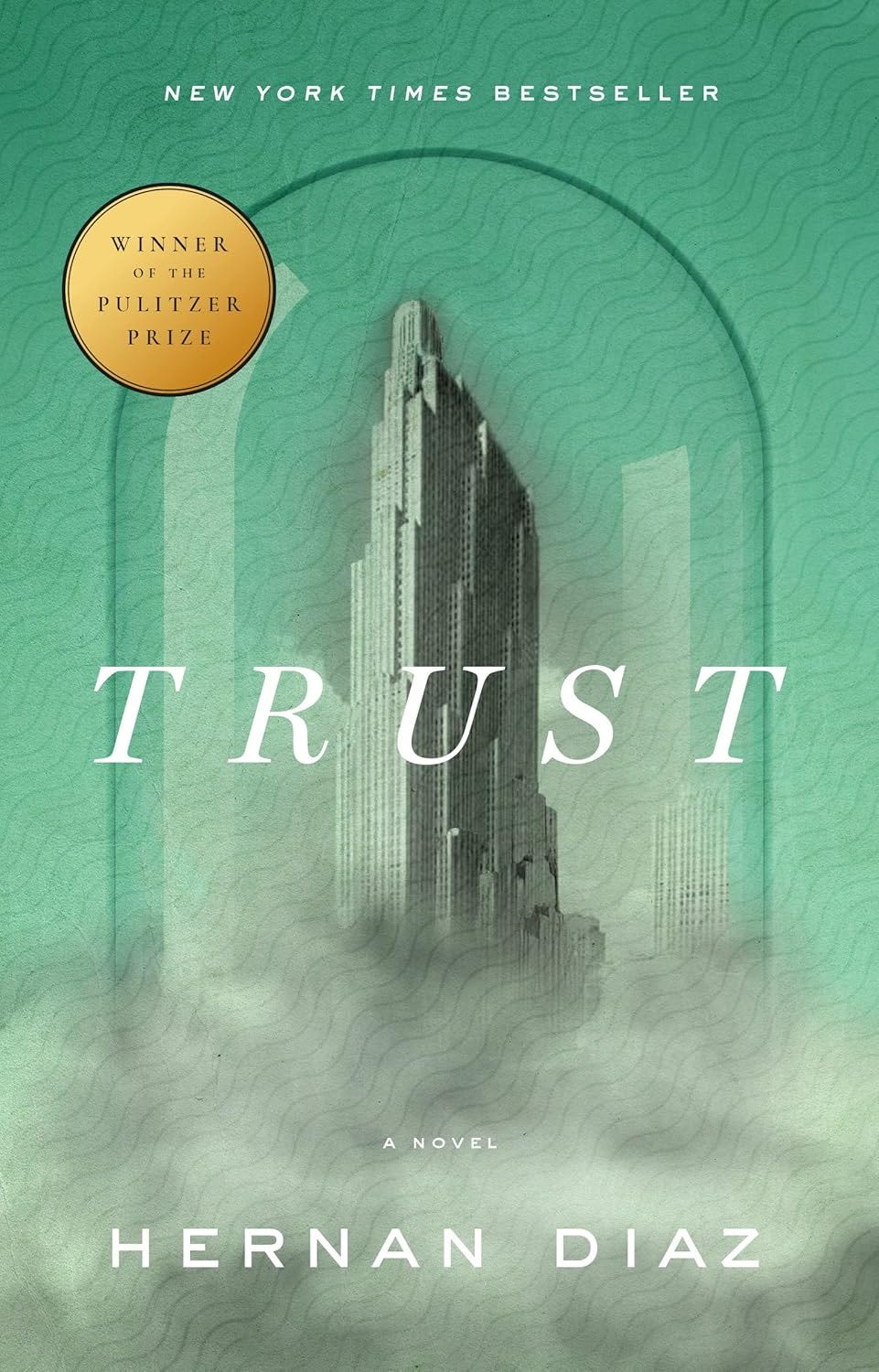Below are a few of my favorite books that read like literary puzzles. These books are very readable (they aren’t all dense literary fiction), but you also have to take a step back and appreciate all of their layers before you judge them.
Piranesi by Susanna Clarke
Piranesi is a work of magical realism that takes place in a fantastical House comprised of endless marble halls. The House is “no ordinary building: its rooms are infinite, its corridors endless, its walls are lined with thousands upon thousands of statues, each one different from all the others. Within the labyrinth of halls an ocean is imprisoned; waves thunder up staircases, rooms are flooded in an instant.”
Two people live in this House: Piranesi and a man called The Other. This epistolary novel is written as a series of Piranesi’s journal entries. Piranesi spends his days exploring the House, tending the bones of the dead, and trying to survive (he fishes on the bottom floors, teaming with sea creatures and waves; mends his clothing; dries seaweed for fires, etc.). Piranesi has no memory of being anywhere else and does not even know his real name. The Other has nicknamed him Piranesi, which he does not seem to understand (Piranesi was an 18th-century Italian architect famous for his drawings of imaginary labyrinth-like prisons).
Twice a week, The Other visits Piranesi to discuss their research into A Great and Secret Knowledge. The Other believes the Knowledge will help “vanquish death” or perhaps give one the powers of telepathy, flight, or “snuffing out and reigniting the Sun and Stars.” Clarke follows Piranesi as he gradually uncovers the mysteries of the House and his identity.
Opinion: Many people will likely not like this peculiar and slow book—Piranesi spends a lot of time admiring marble statues, gathering seaweed, and speaking to birds. However, it’s also spellbinding, surprising, and ultimately uplifting. A lot is going on in this quiet novel. We have a magical missing persons case (Who is Piranesi?) wrapped in several mysteries (Why is he there? Who is The Other? What is the Great and Secret Knowledge?) wrapped in an enigma (What is the House?).
My favorite aspects of Piranesi are the allegories and intricate symbolism. Clarke draws on famous labyrinths and escapist worlds in literature, such as C.S. Lewis’s The Magician’s Nephew, short stories by Jorge Luis Borges, the myth of the Minotaur in King Minos’s labyrinth, and Romanticism. There are also elements of Faust, the Bible, Renaissance memory places, and Plato’s Allegory of the Cave. While I enjoyed peeling back these layers, I don’t think this book needs to be read this way. Piranesi ultimately explores how we define our world and find meaning in our lives. However, since I can’t help myself, I wrote (in a spoiler-y manner) my thoughts on some of the literary references in a footnote in my original post—you can read that here.
Overall: I recommend this book to someone who likes surrealistic literary fiction, but it is not for everyone!
Rating: 4.2/5
Genre: Fiction (Magical Realism)
Notable prizes/book clubs/lists: The Women’s Prize in Fiction (2021); Book of the Year (NYT, Guardian, Daily Telegraph, Financial Times, Time Magazine, Times Literary Supplement)
Page count: 272 pages
Audio: 6 hours 58 minutes
Movie/TV pairings: Pan’s Labyrinth; Narnia
Playground by Richard Powers
Playground is set primarily in Illinois and Makatea in French Polynesia. This book centers on four characters — Todd Keane, Rafi Young, Ina Aroita, and Evie Beaulieu — in three different timelines. Playground is a bit of a puzzle, so I’ll provide some background details on each timeline without spoiling anything.
Present day: The primary narrator, Todd Keane, is an immensely successful digital tycoon who founded Playground, a virtual economy platform with billions of daily users. It’s sort of like Facebook + Reddit but gamified through digital coins called “Playbucks.” We meet Todd at age 57, when he is struggling with Lewy body dementia. His opening line is: “It took a disease eating my brain to help me remember.” His sections are written in first person and are addressed to an unnamed “you.”
Powers also follows the residents of Makatea, a tiny atoll in French Polynesia that was ruined in the early 1900s by phosphate mining. The island is now confronted with the possibility of becoming a staging platform for a libertarian, futurist dream by tech billionaires. They want to launch floating, autonomous cities that will exist in the open sea free from taxes and regulations (this is based on Peter Thiel’s seasteading dream). Makatea’s residents must vote to approve this proposal. Powers follows the entire island community, including Rafi Young and Ina Aroita, who live on Makatea with their two adopted children.
Late 20th century: Powers also jumps back to the late 20th century and traces the early lives of Todd Keane, Rafi Young, and Ina Aroita. Ina has lived on naval bases in the Pacific for her entire life before attending the University of Illinois.
We learn that Todd and Rafi were high school students at an exclusive private school in Chicago. Todd, white from the North Side of Chicago, and Rafi, black from the South Side, bond over the Chinese game of Go and become close friends.
Mid to late 20th century: Powers also follows Evie Beaulieu from Montreal. We meet Evie in 1947. She is twelve years old using the first aqualung in a swimming pool. We meet her again at age 92, when she is living on Makatea. Powers traces Evie’s life as a marine biologist. These sections are clearly based on Jacques Cousteau and Sylvia Earle.
This book is difficult to describe, but my best attempt is: Tomorrow, and Tomorrow, and Tomorrow meets Jacques Cousteau meets tech bro AI dystopia meets (something else I can’t write without spoiling this book). Playgrounds abound — in the ocean, in the tech gaming world, in writing, and in AI. At the outset, this book starts slow, and the characters can sometimes feel like caricatures. The narratives can be disorienting. But the end is . . . something else. This book is one you will want to discuss.
Since Playground is hard to discuss without revealing spoilers, I wrote a spoiler-filled discussion in a footnote in my original post—which you can read here. Definitely do not read the spoiler footnote if you want to read Playground! It would ruin the entire experience.
Overall: This is a story about AI, oceanic exploration, environmental destruction, colonization, tech billionaires, and friendship. It’s a literary puzzle, and I was awed by the result. I highly recommend this one.
Rating: 4.5/5
Genre: Fiction; Science Fiction
Notable prizes/book clubs/lists: Booker Prize Longlist (2024)
Page count: 383 pages
Audio: 13 hours 51 minutes
Movie/TV pairings: The Life Aquatic with Steve Zissou; Her; Ex Machina
The Bee Sting by Paul Murray
I’m usually wary of “great novels” (like the “Great American Novel” or the “Great Irish Novel” in this case). They often don’t live up to the hype or just aren’t very fun to read. But I could not put this book down.
The Bee Sting is the rare book that you can’t stop reading, but you also want to write an English paper on. It was a 2023 bestseller and was shortlisted for the Booker Prize. The book is set in Ireland and centers on the Barneses, a well-off family of four struggling after the 2008 financial crash. It’s darkly funny and full of denial and symbolic/actual deaths.
The Bee Sting is like a modern (and much more readable) The Sound and the Fury by William Faulkner. It focuses on one family and has multiple points of view for each family member. It opens with the perspective of Cass, the teenage daughter, then shifts to her younger brother, PJ, and then to their mother, Imelda, and finally to their father, Dickie. The book starts slow but quickly sucks you in. I couldn’t stop reading it once I got to the mother’s point of view. Because I think it’s best to go in blind plot-wise, I won’t spoil it here. If you want to read some of my spoiler-filled observations, you can read that here.
Rating: 5/5
Genres: Contemporary Literary Fiction - Complex Families (Tragicomic)
Notable prizes/book clubs/lists: Shortlisted for the Booker Prize (2023)
Page count: 650 pages
Audio: The Bee Sting is an Audible exclusive performed by a full cast of Irish actors. The audio is excellent (although it is 26 hours and 10 minutes of content).
The Man Who Saw Everything by Deborah Levy
The Man Who Saw Everything is a literary puzzle of a novel that follows Saul Adler, a twenty-eight-year-old British historian, who travels to Communist East Berlin in September 1988 for academic research. It is divided into two parts.
Part 1: The novel opens in London at Abbey Road with Saul waiting for his girlfriend, Jennifer Moreau. Moreau is a photography student and plans to recreate the famous 1969 Beatles Abbey Road album with Saul standing in the middle of the crosswalk. Shortly before the shoot, a car hits Saul, and he suffers from some superficial injuries. Moreau takes the photos and then breaks up with him later that afternoon.
Three days later, Saul heads to East Berlin. In addition to the research trip, he plans to bury a portion of his father’s ashes in the GDR (his father was an ardent socialist). Although Saul speaks fluent German, the GDR government gives him a translator, Walter Müller. Saul stays with Walter and Walter’s sister, Luna, who works as a nurse and is a bit manic. I won’t spoil the plot of part 1, but Saul quickly emerges as an unreliable narrator (he tells his East German companions that the wall will fall in November 1989).
Part 2: The second part of the book is set in 2016. It opens with another car accident on Abbey Road. This time, fifty-six-year-old Saul suffers life-threatening injuries and is hospitalized. Under the steady drip of morphine and battling sepsis, he struggles to recall his past. He slowly parses through his memories and pieces together what has happened in the past several decades.
My take: I’ve read two of Levy’s other books, Swimming Home and Hot Milk, and like in those novels, Levy packs an astonishing amount into less than 200 pages. Through intricate symbolism, she grapples with the weight of history, memory, knowledge, personal culpability, and political history.
Small details are repeated throughout the novel. For instance, Levy repeats the symbol of a jaguar. Luna fears jaguars; when Saul buries his father’s ashes, he feels like he has “been disemboweled by a jaguar”; and in the second car accident, he is hit by a Jaguar car. Levy also plays with the concept of the “specter” throughout the novel. Saul recalls the famous quote from The Communist Manifesto by Marx and Engels—“a specter is haunting Europe.” Saul uses this term to describe a small wooden train in Walter’s home (it is “like a specter” that torments Saul) and Walter’s unexpected authoritarian tone of voice. When Saul attends a photography exhibition of Jennifer’s work where he is the primary subject, he notes, “There is a specter inside every photograph.” Saul is haunted by the “specters” of his past and the emotional and psychological walls he creates.
Levy also explores East German history through Saul’s memories. There are evident parallels between the surveillance GDR state and elements of Saul’s life. Saul has an authoritarian father and has to censor himself for much of his life by repressing his attraction to men. He is also literally surveilled while in the GDR (he can hear GDR operatives clicking in to listen to his phone calls) and is surveilled in a way by being the subject of Jennifer’s photographs. He feels connected to his East German companions, who seem to “see” him, but do they really understand him, or are they just observing him to inform the Stasi?
Overall: The Man Who Saw Everything is like a literary cat’s cradle. It’s destabilizing and often confusing, but gradually, Levy ties together the inconsistencies and little details. The result is astonishing. This book is not for everyone, but I’d recommend this book to readers who love historical literary fiction.
Rating: 4/5
Genre: Historical Fiction; Literary Fiction
Notable prizes/book clubs/lists: Longlisted for the Booker Prize (2019)
Page count: 199 pages
Audio: 6 hours 5 minutes
Movie/TV pairings: The Lives of Others; Goodbye, Lenin!
Food pairings: Canned pineapple
Trust by Hernan Diaz
Trust is set in New York and follows a Wall Street tycoon’s rise to power beginning in the 1920s.
Overview: Trust opens in 1920s New York with an imagined novel-in-a-novel called Bonds, published in 1937 about the rise of business mogul Benjamin Rask. Benjamin marries Helen, an aristocrat, and the two become immensely wealthy through the financial crash. The final chapters of Bonds focus on Helen’s mental health issues and time at a Swiss psychiatric institute. Then the novel completely changes.
Diaz divides Trust into four sections, which seemingly stand alone, and explores the power of money and wealth. As one character says:
Money is a fantastic commodity. You can’t eat or wear money, but it represents all the food and clothes in the world. This is why it’s a fiction. ... Stocks, shares, bonds. Do you think any of these things those bandits across the river buy and sell represent any real, concrete value? No. ... That’s what all these criminals trade in: fictions.
Opinion: Aside from reading the blurb, I went in completely blind to Trust. I recommend that you do the same. The novel changes so drastically that I thought I had picked up the wrong book, but you have to trust the process here.
Overall: I highly recommend Trust is a smart, carefully constructed novel.
Rating: 4/5
Genre: Historical Fiction
Notable prizes/book clubs/lists: Pulitzer Prize for Fiction (2023), Longlisted for Booker Prize (2022), Kirkus Prize for Fiction (2022)
Page count: 402 pages
Audio: 10 hours 21 minutes










I love the layers of Piranesi. I think I read it thrice now and always come up with new realizations.
The Bee Sting starts funny, grows despondent. Still entertaining. Didn’t like Trust, thought it a slog poorly written.